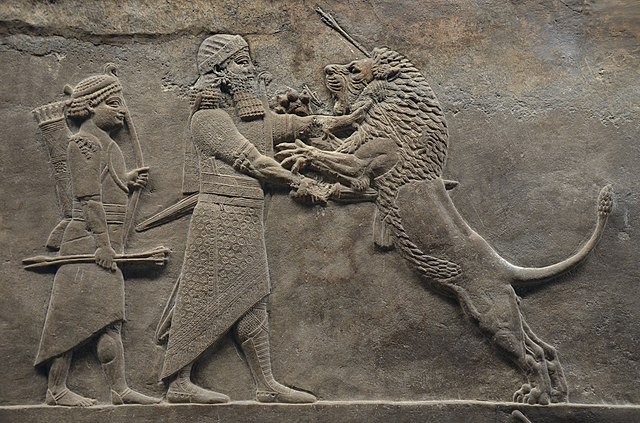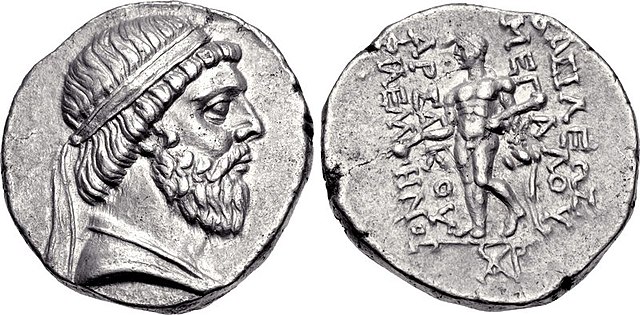Xerxes I, commonly known as Xerxes the Great, was a Persian ruler who served as the fourth King of Kings of the Achaemenid Empire, reigning from 486 BC until his assassination in 465 BC. He was the son of Darius the Great and Atossa, a daughter of Cyrus the Great. In Western history, Xerxes is best known for his invasion of Greece in 480 BC, which ended in Persian defeat. Xerxes was designated successor by Darius over his elder brother Artobazan and inherited a large, multi-ethnic empire upon his father's death. He consolidated his power by crushing revolts in Egypt and Babylon, and renewed his father's campaign to subjugate Greece and punish Athens and its allies for their interference in the Ionian Revolt. In 480 BC, Xerxes personally led a large army and crossed the Hellespont into Europe. He achieved victories at Thermopylae and Artemisium before capturing and razing Athens. His forces gained control of mainland Greece north of the Isthmus of Corinth until their defeat at the Battle of Salamis. Fearing that the Greeks might trap him in Europe, Xerxes retreated with the greater part of his army back to Asia, leaving behind Mardonius to continue his campaign. Mardonius was defeated at Plataea the following year, effectively ending the Persian invasion.

Rock relief of Xerxes I, found in Persepolis, kept at National Museum of Iran
The "Caylus vase", a quadrilingual alabaster jar with cuneiform and hieroglyphic inscriptions in the name of "Xerxes, the Great King". Cabinet des Médailles, Paris
Engraving of Babylon by H. Fletcher, 1690
The soldiers of Xerxes I, of all ethnicities, on the tomb of Xerxes I, at Naqsh-e Rostam
King of Kings was a ruling title employed primarily by monarchs based in the Middle East. Although most commonly associated with Iran, especially the Achaemenid and Sasanian Empires, the title was originally introduced during the Middle Assyrian Empire by king Tukulti-Ninurta I and was subsequently used in a number of different kingdoms and empires, including the aforementioned Persia, various Hellenic kingdoms, India, Armenia, Georgia, and Ethiopia.
The title King of Kings was prominently used by Persian kings such as Darius the Great (pictured). The full titulature of Darius was Great King, King of Kings, King of Persia, King of the Countries, Hystaspes' son, Arsames' grandson, an Achaemenid.
King of Kings was among the many titles used by King Ashurbanipal of the Neo-Assyrian Empire (depicted strangling and stabbing a lion).
Xerxes the Great of the Achaemenid Empire referred to himself as the great king, the king of kings, the king of the provinces with many languages, the king of this great earth far and near, son of king Darius the Achaemenian.
Mithridates I of Parthia (r. 171–132 BC) was the first post-Achaemenid Iranian king to use the title of King of Kings. Beginning with the reign of his nephew Mithridates II (r. 124–88 BC), the title remained in consistent usage until the fall of the Sasanian Empire in 651 AD.








